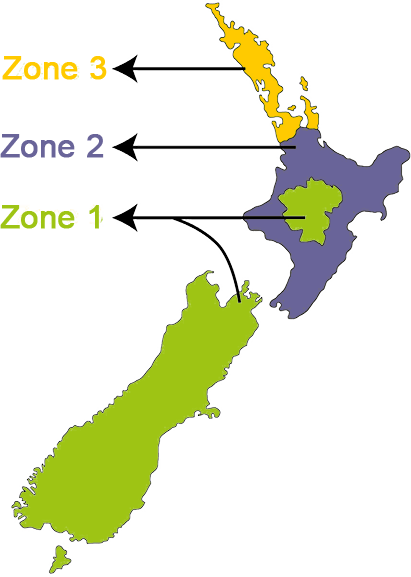
Growing Guide
Full sun, with protection from strong winds. Well-drained in raised garden beds or mounds to ensure good drainage.
5cm
300cm
600cm
600cm2
5cm
Transplant
7-10
730-2190
Combine equal parts peat moss, perlite and finely ground volcanic rock to create a coarse, well-draining growing medium in which to germinate your seeds.
Pour the growing medium into a 10-15cm deep tray with drainage holes in the bottom.
Mix the fig seeds with 1/2 cup of wood ash or fine horticultural sand.
Distribute the mixture evenly over the surface of the growing medium in the tray.
Water the seeds to settle them into the growing medium and encourage them to germinate.
Place the tray in a location that receives four to six hours of bright sunlight per day.
Water, as needed, to keep the growing medium evenly moist; the seeds should germinate and sprout in approximately seven to 10 days.
When the seedlings have reached a few inches in height, they can be gently removed from the seedling tray and planted into 5-8cm pots.
Seedlings can be planted into regular potting soil, in the ground or in a pot, and should be watered well for the first two weeks after transplanting.
A thorough watering once every two days is best.
After this period, they should be watered only when the surface of the soil feels dry to the touch.
Ficus seedlings also perform better when kept in indirect sunlight for the first month before being moved to a location with direct sunlight.
Figs can be grown in a pot at least 60cm wide and deep, allowing the roots to spread.
Position pot in full sun and fill with quality potting mix.
Dig a hole in the pot twice the size of the root ball.
Remove the shrub from the container, gently tease the roots and cut away any circled or tangled roots.
Position in hole in the pot and gently backfill, firming down.
Water in well.
Water deeply once every two weeks.
Choose a sunny spot with well-drained soil.
Enrich with fertilizer.
If the soil is clay-based, add gypsum and fork in well.
Dig the planting hole twice as wide, and to the same depth as the root-ball.
Gently tease roots from the container, and position in the hole.
Backfill.
Form a raised ring of soil around the base of the tree, and dig a well around the trunk, so that the mound it shaped like a doughnut.
This allows the water to go to where it's needed.
Water in well.
Mulch around the base but away from the trunk.
Water in deeply.
When fruit is purple, soft to the touch and smells sweet.
Only pick fruit when it is ripe, as it will not continue to ripen off of the tree.
To harvest fig seeds, acquire a fresh fig, soak for two to three days in a bowl of clean water for 1-2 days.
Cut Fig in half, scoop out the pulp and seed, and soak for a day or two.
Viable seeds will sink to the bottom of the container.
The rest can be discarded.
The viable seed has already absorbed moisture and will be ready to crack and germinate quickly.
Soak two or three fresh, ripe figs in a bowl of clean water for one to two days.
Pour the water in the bowl through a strainer and spread the seeds on a paper towel to allow them to dry slightly.

Zone 1 - Cool
September , October
Zone 2 - Temperate
March , April , May , June , September , October
Zone 3 - Subtropical
March , April , May , June , September , October